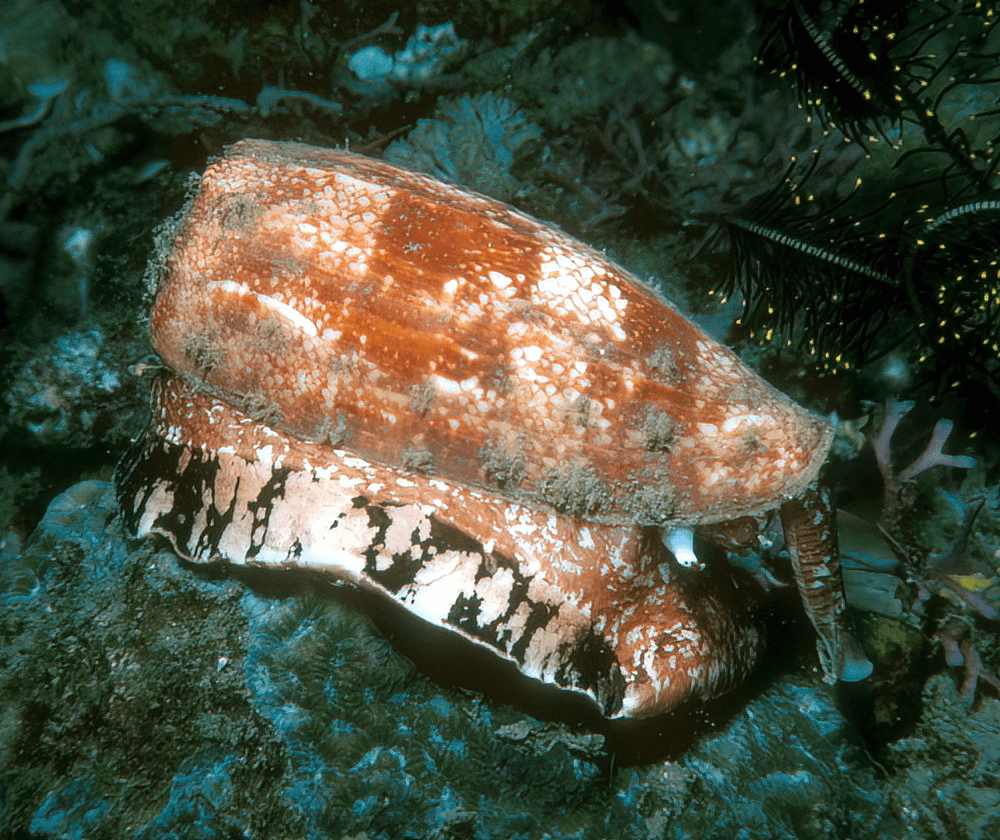It can be hard to see snails as a threat, but did you know that they’re among the five most dangerous animals to humans on Earth? Freshwater snails claim the most human lives for the diseases they carry, but out in the ocean, cone snails carry harpoons laced with a complex cocktail of neurotoxins that can instantly paralyze their prey. Unfortunately for us, it can have a similar effect if we end up on a cone snail’s bad side.
One way to get there is to pick up a cone snail and give it a prod, something that was recently demonstrated by a video on Reddit. Of course, it can be hard to be suitably wary of nature when it doesn’t look as scary as the coral snake or blue-ringed octopus (another animal social media users seem to enjoy playing with), but it’s a reminder that not all dangerous animals advertise the fact they’re packing some serious venom.
Aposematism is the name given to warning signals intended to ward off predators. Poison frogs are among the most famous and vibrant of examples, coming in stunning shades of blue, red, and yellow as an upfront message of “eat me and you’ll probably die”.
The cone snail doesn’t fall into this category, however, because they’re not trying to tell dangerous things to back off. In true Walter White style, they are The Danger. It’s hypothesized that the venom from just one of the deadliest cone snails could kill up to 700 people.
Textile cone snails (Conus textile) like the one in the above video are well camouflaged in the sand they lurk in. Here, they wait for prey to get within spearing distance and then unleash a remarkable weapon.
Cone snails have a modified tooth, or “radula”, which forms a spear-like projectile they can use to inject a smorgasbord of nasty. All cone snails are venomous, but each species produces its own unique blend of toxins that has evolved to target particular prey; larger species go for small fish, whereas the smaller species tend to hunt worms.
However, research has found it’s not just neurotoxins at play. A team of scientists from the University of Utah discovered that for two species, their venom also contains large amounts of a unique form of the hormone insulin, which is used throughout the animal kingdom to regulate metabolism by promoting the removal of excess glucose from the blood.
The insulin in the venom wasn’t the same these predatory mollusks use to regulate their own blood sugar, and was actually more similar to that found in their fish prey. It was also only present in fish-hunting cone snails, and not the smaller ones that hunt for things like worms.

The geography cone (Conus geographus) is thought to be the most dangerous of these predatory snails, and can also kill prey by trapping it in a net.
When the researchers directly injected this insulin variant into zebrafish, their blood sugar plummeted and they went into hypoglycemic shock. But when they added it to their water, they immediately went into a stupor and began swimming much more slowly. The researchers, therefore, speculate that these two species sedate their prey by giving them an overdose of insulin.
We humans also need to keep our blood sugar in check, so while it’s unclear how insulin adapted to target fish prey might affect us, we can all agree it’s probably best not to find out. So, if you’re not clued up on your predatory snail ID, it might be best to admire things you find on the beach from a safe distance.
Oh, and don’t even think about touching those sand dollars.
Source Link: Video Shows Person Unknowingly Holding One Of The World's Deadliest Snails